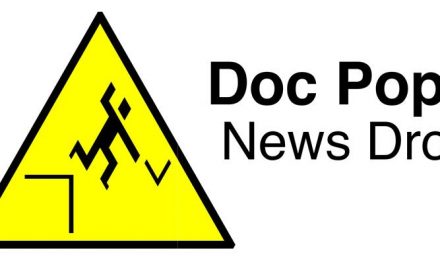In today’s fast-paced software development environment, it is nearly impossible to keep up without using open source components, and it is estimated that 96.8 percent of developers rely on them. As agile and DevOps increasingly dominate the tech world, software development lifecycles (SDLC) are shortening. Open source libraries offer a wide range of ready-made components that can help you cut the time it takes to develop a product.
Open source software (OSS) differs from proprietary software in that it is available to everyone. You can freely copy, alter, and share the code. You must still accept the terms of the software license, but open source licenses grant users much broader rights than do proprietary copyright holders.
Benefits of open source components include fast and easy access, high quality, and cost-effectiveness. Software vendors can take advantage of OSS for “non-competitive” elements, allowing developers to focus on competitive parts of the solution.
The Importance of Open Source Security
Developers face a number of challenges when using open source components in their software. They struggle to secure their apps and get IT departments to accept them. Meanwhile, the number of open source security vulnerabilities has been rising, exposing developers and security teams to higher risk.
Application security testing technologies used for proprietary code don’t always detect vulnerabilities in open source components, so you have to rely on the open source community to find and fix them. However, when the open source community discovers vulnerabilities, the details are made public, allowing hackers to take advantage of the vulnerabilities. A single vulnerability in a widely-used component can affect many products.
Furthermore, open source components can affect the quality of your product. There are no established standards for evaluating the quality of an open source component, making it a challenge to measure and compare.
Most commercial software uses numerous open source components, building on proven functionality. However, you should only use OSS in commercial applications if you can comply with the associated license. Most risks to organizations are in the areas of compliance and policies. For example, open source licenses might not allow commercialization of software. Operational risks include the lack of commercial services like support.
Non-compliance with the terms of the open source software license could result in litigation, so due diligence is required. Open source products often lack adequate warranties and liabilities, increasing the warranty and liability risk for the company. Another legal risk could emerge if the OSS infringes on intellectual property rights.
5 Best Practices for Managing OS Components
1. Choose Your Software Carefully
Though it may be tempting to use any and every open source material you can find, you should consider whether OSS suits your needs. Some open source products may provide 24/7 customer support, while others may lack transparency. You should do your research, as you can easily overlook open source solutions that could work for you. The open source community tends to be responsive and can help you understand the risks and benefits of components. You can also refer to sites like Source Forge. Another issue to consider is whether the open source license meets your organization’s acceptable level of risk.
2. Don’t Copy and Paste
Developers often used to copy and paste code snippets from open source libraries, but today most realize that this is not the best way to develop application code. When you copy a code snippet, you also copy embedded bugs or vulnerabilities, and you can lose the ability to track them once you paste them in your software. This makes it almost impossible to manage and update the code when new vulnerabilities are discovered. If you use an older version of the open source code, you can miss out on the fixes incorporated into the newer version.
Your software code needs to be flexible to keep up with changing requirements throughout the development lifecycle. This includes applying patches to the codebase quickly and effectively, which requires visibility into the open source software used. Thus, you should only use components that you can track and update. You can use tools like Bit to isolate components from a library and use them without copy-pasting.
3. Keep Track of OS Components and Update
You have to keep tracking OS components throughout the life of your product. Transparency is critical for finding security vulnerabilities in software. Most bugs and vulnerabilities are fixed in newer versions of open source components, but you won’t know they ever existed if you don’t track them. Hackers could exploit those vulnerabilities before you have a chance to fix them.
You should keep an inventory of the open source libraries you are using so you can learn about vulnerabilities and updates. This inventory should be exhaustive and include all open source components and the versions in use, the repository from which you downloaded them, and any dependencies. Open source dependencies should be easily discoverable. If you don’t have a dynamic inventory of all components, you won’t be able to mitigate the risk when vulnerabilities are exposed.
To prevent security breaches you must update your codebase immediately when you find them. However, the updates you find might not be backward compatible, so you also need to test them to prove functionality.
4. Take Advantage of Forking
One advantage of open source software is that you can modify the source code. “Forking” is when you clone the open-source product and customize it to your needs. Because you maintain a link to the original repository, you can track changes to the open source components. However, forking requires effort and takes time, so developers are often reluctant to attempt it. The more you fork a component, the more maintenance it requires upstream.
If you are unsure whether it is worthwhile, you should get tips from the open source community before attempting to fork. Knowledgeable software developers can help you decide if forking is a good solution, how you can fix your current software, or if you can use another software solution. Forking is often a good option for components that you don’t expect to update frequently.
5. Use Automated Tools
Maintaining security is highly time-sensitive, which is why you need to use automated tools that can work fast enough to mitigate risks in time. Furthermore, the decentralized nature of the open source community and the sheer scale of vulnerability data, make it almost impossible to manage open source components manually. Automation helps you enforce policies throughout the SDLC. You can automate the process of discovering vulnerabilities and assigning action items to implement fixes, and you can perform automated cleanups.
Automated open source management tools keep track of libraries for you, so you can focus your energy on other things. A binary repository manager stores components and packages so you can access them easily. They also enable you to access your data in the event that external repositories become unavailable. You can use software composition analysis (SCA) tools to generate inventory reports, including details on direct and transitive dependencies. These tools save countless man-hours in terms of finding and applying patches and managing dependencies between components and libraries.
Conclusion
Open source software has become an unavoidable resource for the agile development world. The benefits of OSS continue to outweigh the risks, but developers must incorporate stringent security measures into the SDLC. Code vulnerabilities remain the biggest threat to organizations and present a window of opportunity for malicious attackers. To stay ahead of the threat, developers need to ensure that they effectively manage their use of open source components.











